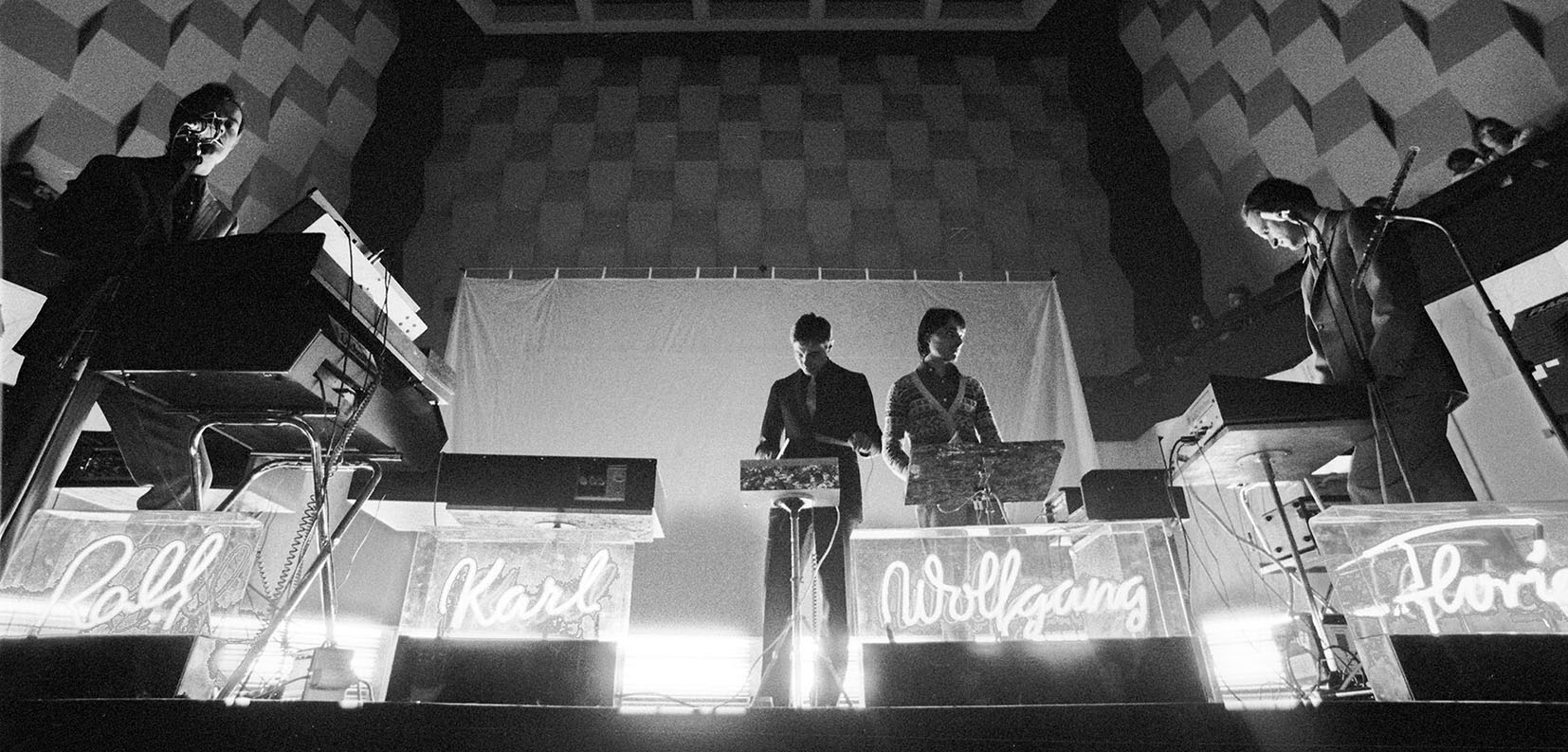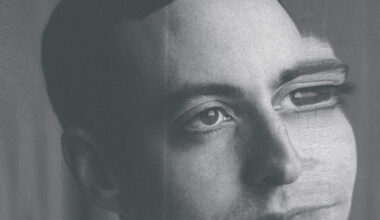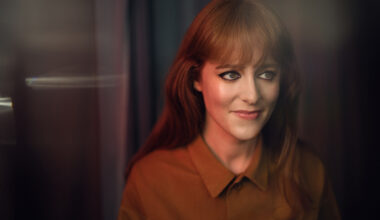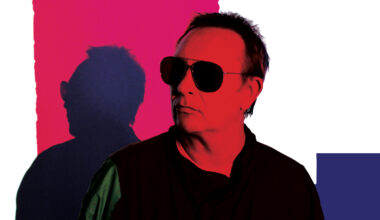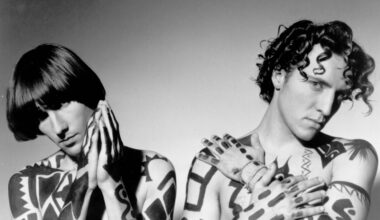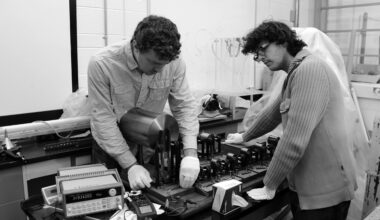It’s 40 years since Kraftwerk released their “year zero” album, ‘Autobahn’. With the help of insiders Wolfgang Flür and Michael Rother, and qualified self-confessed Kraftwerk obsessives Daniel Miller and Andy Mccluskey, we examine this most crucial and enigmatic of electronic music landmarks
In 1973, the world’s media was getting into a lather about comet Kohoutek. Its tail was going to occupy two thirds of the visible sky. It was going to light up the heavens brighter than seven full moons. Crackpot religious cult the Children of God told anyone who would listen that it was the harbinger of The End Of Times. It was due on Christmas Day, but the hype started early in the year.
“I remember how we were all a little hysterical about it and feared for our existence,” says Wolfgang Flür, who was soon to become Kraftwerk’s stand-in drummer and would eventually be one quarter of the group’s definitive line-up, but who was then working as an apprentice in an architect’s office designing shop interiors.
Ralf Hütter and Florian Schneider, the creative core of Kraftwerk, at that time an experimental rock/noise project, chose to immortalise the comet’s imminent arrival with a single called ‘Kohoutek-Kometenmelodie’ in December 1973. Given that Kraftwerk’s next album, ‘Autobahn’, released the following year, was as unexpected a phenomenon as a shooting star must have been to God-fearing medieval peasants (which, given the popularity of Jethro Tull in the mid-70s, is quite an apt metaphor), it’s tempting to think that they felt they were also lighting up the sky, a once-in-a-lifetime experience in the tumultuous rock firmament.
In reality, writing slow, swirling paeans to comets, as in ‘Kometenmelodie 1’ (as it became when re-recorded for the ‘Autobahn’ album), was part of the kosmische space rock urges of their milieu. Tangerine Dream had done pretty well out of lengthy spaced-out pieces and their commercial success wouldn’t have been lost on the ambitious Ralf and Florian. Still, the single that was released in December 1973, like Kohoutek itself, was something of a damp squib, but it was a stepping stone to what they were about to become. And Wolfgang Flür was going to play a crucial part.
“I was completely surprised when they turned up at the architectural studio,” says Flür of his first encounter with Ralf and Florian. “They’d come to ask me to rehearse with them for an appearance on ‘Aspekte’, a TV culture show on the German ZDF channel. They needed a drummer urgently. They wanted me because they’d heard me playing with my band Spirits Of Sound in a small town near Düsseldorf. Back then, I had already developed a very individual, minimal style, which they told me they liked.”
The famously introspective and guarded Ralf and Florian were not, however, the most enticing prospect for Flür.
“I was still uncertain as to whether I could drum for them,” he says. “Their music was so different to the music I had played in my own bands. And they weren’t in a rush for me to become a permanent member of the band, either.”
At this stage, Wolfgang Flür was just another musician to be hired in, part of Ralf and Florian’s attempt to fatten their live sound and be able to present themselves as a band.
“Right from the start I had problems with Ralf and Florian’s evasive personalities,” Flür continues. “I found it difficult to agree to rehearse with them. Besides, some time before their visit, they had poached Michael Rother, the guitarist in my band, and therefore broken up my group. I was still pretty cross with them.”
Michael Rother, who was in Kraftwerk for six months or so in 1971 before forming Neu! with drummer Klaus Dinger, and then Harmonia with Moebius and Roedelius, has a slightly different take on events.
“I was not poached by Kraftwerk!” he says. “I wasn’t a virgin being poached by a rival tribe, it was my decision.”
Rother was working in a mental hospital, serving out his time as a conscientious objector in lieu of then-compulsory service in the German military. He first heard about Kraftwerk from a colleague at the hospital, also a guitarist, who mentioned the band were recording “film music” and maybe he would like to go to a session.
“I thought, ‘Kraftwerk? What’s that?’,” he says. “I had never heard of them. I thought the name was silly.”
But he went along anyway and ended up jamming with Ralf Hütter while Florian Schneider and Klaus Dinger, who Ralf had recruited as a drummer during the recording of Kraftwerk’s debut album, watched “from the sofa”.
“Florian contacted me two weeks later and asked me to join the band, but in the meantime Ralf had left,” says Rother. “He’d gone to continue his architecture studies and was nowhere to be seen. I never played in a Kraftwerk line-up with him, which was unfortunate because I would have enjoyed having him along. The jam with Ralf was like a door had opened. We didn’t have to talk about music. He was the first guy I played with who had the same vision for a blues-free music.”
Despite becoming what was a pretty electrifying trio, the Schneider/Rother/Dinger version of Kraftwerk quickly petered out. Ralf Hütter came back into the fold, Rother and Dinger left with the blueprint for Neu! (which they finessed with producer Conny Plank), and Ralf and Florian made two more Kraftwerk albums, ‘Kraftwerk 2’ in 1972 and ‘Ralf And Florian’ in 1973.
It was after the release of the latter album that Ralf and Florian first approached Wolfgang Flür. And despite Flür’s initial wariness of Kraftwerk, his feelings began to change as soon as the cameras were rolling on the ‘Aspekte’ TV performance.
“During the show, something clicked in my head, both musically and historically,” he says. “I suddenly understood that my idea, of using an electronic drum set alongside the Minimoog and the Arp synthesiser, was just right for the Kraftwerk sound. It was the future. I had made a decisive contribution to modernity, to the electrification of Kraftwerk, and that made me proud. I felt that I had proven myself as an artist.”
For his part, Ralf certainly seemed to feel the appointment of Flür benefited Kraftwerk.
“We have been working together for three or four years,” he told Best magazine in 1976, talking about the classic line-up of Hütter, Schneider, Bartos and Flür. “That’s really the best band that we have made to this day. There’s a perfect symbiosis between our personalities.”
A few years later, in 1981, Ralf told Electronic & Music Maker magazine, “I think we were one of the first groups to have an electric drummer with Wolfgang Flür. I’m not just a keyboard player, nor is Wolfgang simply a drummer, this is too limiting for each player who has developed skills in making harmonies and melodies as well as rhythms.”
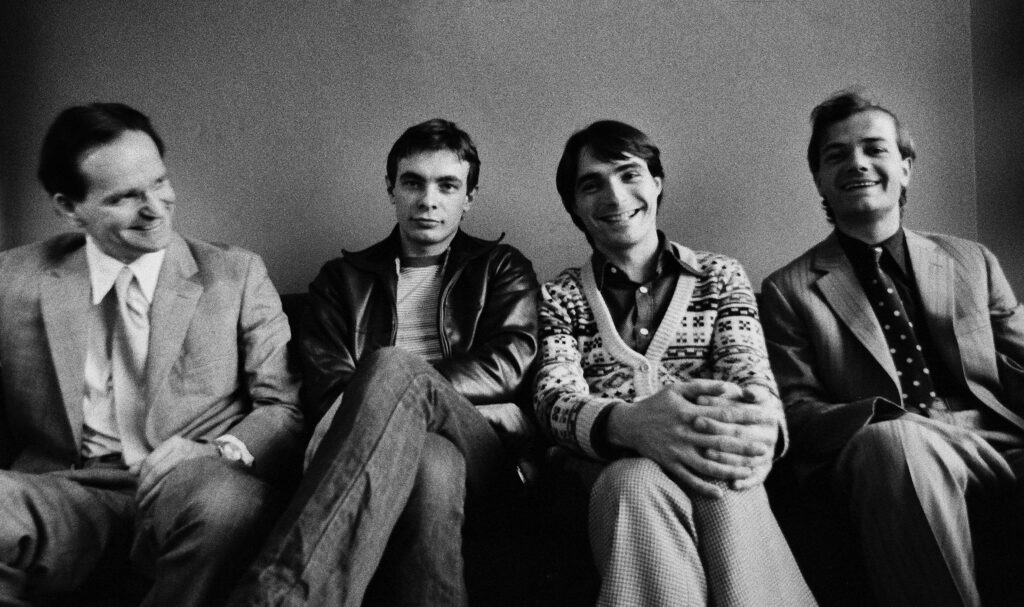
In 1974, though, the line-up was far from fixed. Ralf and Florian even tried to recruit Michael Rother again, setting up the tantalising thought experiment of imagining how a Kraftwerk made up of Hütter, Schneider, Rother and Flür might have sounded.
“They wanted to play live, but they had the same problem – they needed musicians to join them to put their music on the stage,” says Rother. “It was one of those telephone calls, like the one from David Bowie later on [Bowie wanted Rother to make an album with him in Berlin in 1977]. But I was happy with Neu! and Harmonia.”
As the band went into Conny Plank’s studio to start recording tracks for the album that would become ‘Autobahn’, they were fast approaching the line-up and the sound that was going to define both Kraftwerk and the future of popular electronic music.
Wolfgang Flür had built an electronic drum kit with Florian for the ‘Aspekte’ appearance. They had cannibalised the rudimentary rhythm box used on the ‘Ralf And Florian’ album, which featured the melodious and gentle ‘Tanzmusik’. It was this piece Ralf and Florian had needed Flür to perform with them on the TV show. With Flür playing the beat live, it’s interesting to hear how the elastic and fluid feel of that performance makes the album version of the track, recorded with the beat box preset rhythm, sound stilted by comparison.
“I found the artificial sounds of the rhythm box very appealing,” says Flür. “If you connected the box to an amp and played the individual sounds using the buttons, they sounded similar to snare drums, bass drums, cymbals, claves or tom-toms. As the drummer, the only thing I had to figure out was how to operate the rhythm box with sticks. You couldn’t generate sounds, they were integral. I could only alter the volume. With Florian’s input, we worked out how we could connect the box with my board and the metal plates that were screwed to it. Then I got to work on the build.”
Freeing the sounds from the constraints of the pre-programmed rhythms of the drum machine was a critical breakthrough for the band, both technically and creatively. Now Kraftwerk had their own electronic rhythms, played by a human who was able to react to whatever Ralf and Florian were doing. It was a sound no one else had and it was integral to the astonishing breakthrough that ‘Autobahn’ was to represent.
But there was another secret sonic weapon – the group’s producer, Conny Plank. Ralf and Florian had recorded three albums with Plank when they started on ‘Autobahn’. Plank, by all accounts, was a generous man, in love with electronic music and its possibilities. Many people, Flür included, see him as the co-architect of the Kraftwerk sound.
“I went to his studio in Wolperath [near Cologne] with Ralf and Florian a couple of times,” says Flür. “When I was there, I listened to how he created noises with the Minimoog. It was Plank who made the car noises, not Ralf or Florian. They sat on a sofa behind the recording desk and Plank offered them sounds. Now and then, Ralf and Florian would say, ‘We’ll take that one’. It was like going shopping. They bought sounds. They chose what would be in their songs. Synthesiser sounds were a completely new aural experience. None of them sounded like a familiar musical instrument. My minimal rhythm beats on the drum pads board did the rest.”
Most of Flür’s contributions were captured at the rehearsal room Kraftwerk used in Düsseldorf.
“They were recorded using Plank’s mobile equipment,” says Flür. “It was a converted lorry which had a small recording desk and a tape recorder installed. Plank then used a long cable going into the studio window to record my drumming board and its clear electronic sounds.”
Michael Rother is equally effusive about Plank’s skills.
“He was a great worker, with a lot of bright ideas,” says Rother. “He had lots of talent for mixing and doing sound creation. Without him, Neu! probably wouldn’t have ended up with an album. There is no way around that. He helped the musicians create their visions. He had a great sensitivity and a great mind for listening to you talk. He once compared his role to that of a midwife, the artist giving birth to his baby, and so I would expect a similar significant role in the creation of ‘Autobahn’.”
Conny Plank wasn’t one for contracts or thinking too much about money, though. When ‘Autobahn’ became an international hit, Kraftwerk found themselves in the company of big shot American managers, and shortly afterwards they cast Plank adrift. Their next album, ‘Radioactivity’, was produced by Ralf and Florian at their own Kling Klang facility.
“At that time, Plank needed the finances to start his own studio,” says Rother. “So these clever business guys, Ralf and Florian, because they had money enough, they said, ‘Let’s make a deal’. And they gave Plank money and sort of erased him from that period.”
‘Autobahn’ was released in November 1974. Its status as the pivotal release in the Kraftwerk catalogue is clear from the process the artwork went through. The original German album cover was designed by Emil Schult, who co-wrote the lyrics to the title track (and briefly played guitar with the band in 1973).
The German record sleeve was the last time long hair appeared on Kraftwerk product. Ralf’s locks are combed back but emerge from behind his ears, flowing over his shoulders, and the spectacularly hairy and bearded Klaus Röder, who played violin on ‘Mitternacht’ during his very short tenure in the band, grins like a stoned character from The Fabulous Furry Freak Brothers comics. On the right, gazing out of the window, Emil Schult sports a fur-collared bomber jacket. Once Wolfgang Flür’s status as a permanent Kraftwerker was eventually settled, Schult was given the job of replacing his own head with that of Flür’s, an act of pre-Photoshop cut and paste which must have been a surreal and slightly ghoulish experience for Schult.
While their first three long players remain deleted and apparently unloved by their creators, ‘Autobahn’ got a makeover, with the sleeve tidied up to make it fit the new aesthetic the group had developed. In the UK, the German cover was dumped and replaced with what became the basis of today’s officially approved version, making use of the white-on-blue British motorway road sign graphic. They clearly preferred the UK album design because they dropped the German cover as soon as the first pressing sold out.
As fun and as enticing as Emil Schult’s original sleeve was, the austere white-on-blue graphic seemed far more appropriate for this new, precise Kraftwerk. The motorway sign sleeve was created by Vertigo Records in the UK, but the designer’s identity remains unverified, despite plausible theories that it was the work of the troubled design genius Barney Bubbles, who took his own life in 1983.
Daniel Miller, the boss of Mute Records, first heard the album in a record shop in Vienna. He was on an extended sabbatical from his early working life, driving around Europe, often hacking up and down autobahns.
“I wasn’t a huge fan of Kraftwerk at the time,” he says. “I’d heard ‘Ralf And Florian’, but I wasn’t that keen on it.”
Miller was more into the likes of Can, Neu! and Klaus Schulze, but when he first heard ‘Autobahn’, the effect was immediate and profound.
“I fucking fell in love with it straight away,” he says. “The simplicity, the minimalism, the apparently banal lyrics and the repetition. Listening to it, it struck me that electronic music could be poppy as well as being spacey and cosmic.”
He became an evangelist for the album, buttonholing anyone who would listen to him. And he wasn’t alone. Kraftwerk had friends in high places.
“A lot of people thought it was gimmicky,” says Miller. “But I remember when I got back to the UK, the BBC were trailing Wimbledon, the tennis tournament, and they had cut this trailer to ‘Autobahn’. If memory serves, they had synched the rackets hitting balls with the metallic-sounding instrumental section. Now you hear that kind of thing all the time, but back then the BBC was very conventional. I remember thinking, ‘Blimey, this has gone mainstream’.”
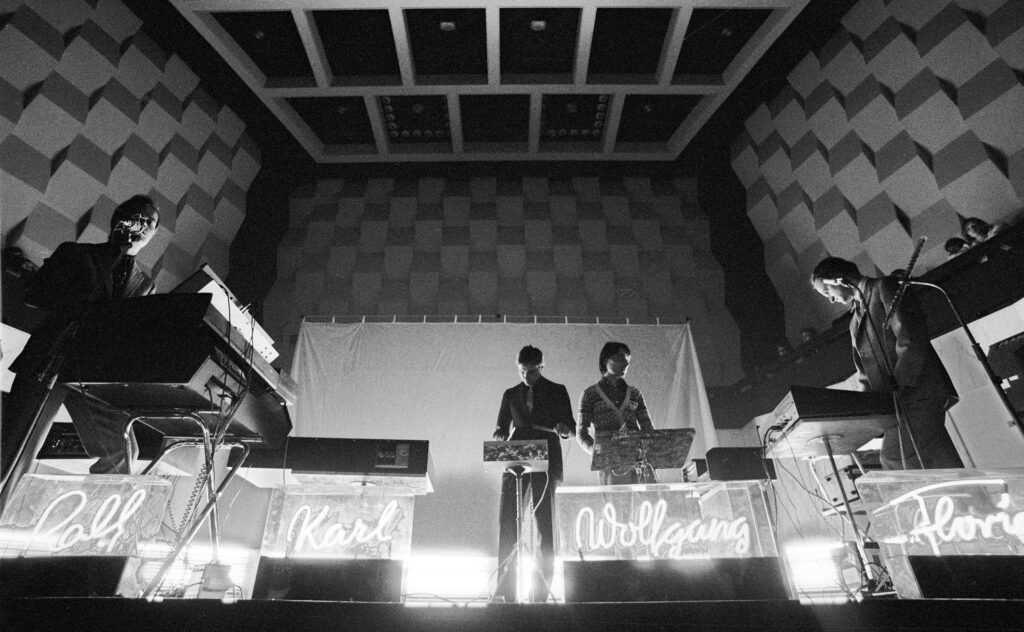
But the biggest surprise was the response to the record beyond the borders of Germany. The band’s label had created a three-and-a-half minute edit of the 22-minute title track and it became a bona fide international hit single, reaching Number 11 in the UK and Number 25 in the US.
“It was amazing,” says Wolfgang Flür. “I couldn’t grasp how that type of song could be a hit with the public in America and played on the radio. It was the country of rock! The land of sweaty, head-banging guitarists! Of blues and country and western! Maybe America just needed something new, something that sounded completely modern. This may sound arrogant, but rock sounded like something out of the Stone Age to us, even in the 70s.”
On the back of this success, Kraftwerk were booked to tour both the USA (in April 1975) and the UK (September). Bar a handful of appearances in France, these were to be their first international shows. Sensing that they would need to emphasise the fact that Kraftwerk was a group rather than a peculiar trio, they recruited percussionist Karl Bartos to help complete the picture.
“I was studying at the Robert Schumann Institute and Florian called my professor very regularly,” Bartos told Electronic Sound last year. “He said, ‘Hey, we are going on tour in America, can you recommend any classically trained percussion players?’ And in Düsseldorf in the middle of the 1970s, I was the guy.”
The four-piece Kraftwerk now had the sonic power of two percussionists and the appearance of a “proper” group. Michael Rother saw first-hand the effect that the new-look outfit and their hit album had on the German music scene, specifically the mini gold rush it caused.
“It was crazy to see the reactions to ‘Autobahn’,” he says. “Suddenly there were American record companies coming over and sending offers to Neu!. Even Harmonia got one, but nothing happened. Maybe that storm blew over too quickly. [American music business manager] Ira Blacker met us and we were offered a record deal by Capitol Records. I still have it in my archives somewhere.”
Musically, the album had a direct influence on Rother’s next album with Roedelius and Moebius, Harmonia’s ‘Deluxe’, which was recorded seven months after the release of ‘Autobahn’.
“We were so shy,” says Rother. “We hid behind our gear, struggling to find the music. When I heard ‘Autobahn’, I realised we had to open our mouths. Like Kraftwerk, we couldn’t sing, but we thought, ‘Why don’t we open our mouths and add these lyrics?’.”
For their American tour, Kraftwerk were supported on some dates by The Strawbs. It’s an indication of how out on a limb Kraftwerk were. That the best support act promoters could come up with was a folk rock band from Twickenham who’d had a hit with a rip-off of a Woody Guthrie song (‘Part Of The Union’). Stone Age indeed.
“I was back in London for a bit in between my travels and I drove a cab for a while,” says Daniel Miller. “One time, I picked up a member of The Strawbs. He must have been really pissed off because I wasn’t remotely interested in his group. I just kept asking him about Kraftwerk. All he could say about them was they kept themselves to themselves!”
You might expect the spectacle of four German guys in suits without a guitar or a drum kit in sight would startle American audiences into some kind of counter-reaction, but Wolfgang Flür remembers the US tour fondly.
“We never met any resistance – either to us or our music,” he says. “We even played in Memphis, Tennessee, Elvis Presley’s home town, and in Littleton, Colorado, in a whiskey club where the men in the audience wore cowboy hats. We were so unapologetically different that the audience simply stared at us and listened to our songs open-mouthed, as if we came from another planet. After we played at the Beacon Theatre on Broadway, The New York Times wrote that when the audience left our concert they were reverent, as if they were leaving a church service. Understandably – we had played with German precision. It must have seemed like science fiction to them.”
In Los Angeles, they recorded a performance of ‘Autobahn’ for the prestigious television show ‘Midnight Special’.
“I seem to remember The Temptations were filmed just before us,” says Flür. “Wolfman Jack was the host. For me, it was a performance like many others. The stage is the stage, you should always give your best. It was very hot in LA and we lived on Sunset Strip, in an apartment hotel with a pool. All day long we had cute girls in bikinis in our living room – at least Karl and I did. At the time, that was important for the ego!”
The UK tour was perhaps less exotic, but in the audience for the Liverpool show in September 1975 was a 16-year-old Andy McCluskey, who would hit the charts himself four years later with his own synth outfit, Orchestral Manoeuvres In The Dark, going on to shift some 40 million albums (and counting). He is probably the best-known and most intense Kraftwerk evangelist in the world.
“I first heard the ‘Autobahn’ single on the radio,” says McCluskey. “Then I got the album. It was a collection of electronic tone poems. For the most part, they’re actually electronic interpretations of real things. And that was a revelation to me. They were using electronic instruments, not just to replace rock ‘n’ roll instruments, but they were also trying to emulate the real world in an electronically reproduced way.”
When the tour was announced, with a date at the Liverpool Empire, he was among the first to buy a ticket.
“Eleventh of September 1975, seat Q36, the first row of the cheap seats downstairs,” he chuckles. “I had no idea what I was letting myself in for when I attended that concert. I doubt the venue was even a quarter full. The support act was a girl with an acoustic guitar, which was bizarre. I guess she didn’t get in the way of the gear and only needed two microphones.
“And then these four guys come out. I’m in flares and a trench coat with an afro and a long scarf, I looked like a young Tom Baker as Dr Who, and they came out with short hair, suits and ties. One of them was playing what looked like an electronic tea tray with wired knitting needles and they had projections behind them. I was utterly stunned by the music they played. It was one thing to hear it on a record, but to see them do it, and to see the way they presented themselves, with their four names in neon across the front, it was transformative.”
That night McCluskey said to himself, “I want to do this.” Many years later, at dinner with Wolfgang Flür and Karl Bartos at the former’s flat, McCluskey spotted a gold disc for the ‘Radioactivity’ single, which had been a Number One record in France.
“I turned to them and said, ‘You do know that OMD’s first single is basically ‘Radioactivity’ speeded up?’, and they both went, ‘Yes, we know!’. It started out as a song called ‘Pulsar Energy’. Essentially it is a punk version of ‘Radioactivity’.”
“Kraftwerk are the greatest band to have ever walked the planet,” says Andy McCluskey with absolute certainty. “What they did in the mid-70s has influenced everything for the last 40 years.”
‘Autobahn’ ushered in the Kraftwerk of legend and undoubtedly changed the world. It legitimised the synthesiser as a tool not just for the super-rich progressive rocker, but for a whole new generation who would take Kraftwerk’s all-electronic blueprint, weld it to the post-punk DIY ethic, and come up with a wave of music that is still cresting today.
It showed Daniel Miller and a whole generation of British musicians that electronic music could be pop music, and gave us Depeche Mode, Orchestral Manoeuvres In The Dark, The Human League and the rest. It also led to ‘Trans Europe Express’, which became the building block for electro and hip hop when it was encountered in New York in the late 1970s. A few years later in Detroit, it inspired the birth of techno.
‘Autobahn’ was the record that upturned the rock ’n’ roll table and scattered the pieces far and wide, pieces that were picked up by the countless synth enthusiasts who created sub-genre upon sub-genre, mining the seam for all it was worth and, in the process, forging some of the most diverse and interesting music of the 20th century and beyond.
Daniel Miller And The Kraftwerk Vocoder
Daniel Miller has got to know Ralf and Florian over the years. He first met them in the early 1980s, when Depeche Mode played a show near to Düsseldorf.
“We were at a club after the show and a mutual friend introduced us,” remembers Miller. “I had no idea what to say to them. Then our mutual friend said to me, ‘Well, speak to them, then!’. So I said, ‘What was the choir sound you used on ‘Radioactivity’?”. It was a Vako Orchestron, an idiosyncratic keyboard designed by former Moog technician David Van Koevering and produced by the toy company Mattel. Less than a hundred were made. That sound on ‘Radioactivity’ was later sampled by New Order for ‘Blue Monday’.”
Ever the gear-head, Miller later had an interaction with Kraftwerk’s equipment himself, when the vocoder used on ‘Autobahn’ came up for sale on eBay in 2006.
“I’m not a big eBay expert, but a guy that I worked with was,” says Miller. “So I got him to bid for the vocoder in his name and we eventually got it for quite a lot of money [$12,500]. We didn’t recognise the name of the person who was selling it, but it turned out that Kraftwerk were selling it through him and there was me buying it through my guy. We could have done that deal a lot more direct.
“Florian was very magnanimous about it and he sent me a certificate, a kind of authentication document. It says, ‘Listen, thou shalt have no other vocoders before me. The Godfather of Electronic Music, 5 July 2006, Florian Schneider’. I keep it on my wall here at Mute Records.”
